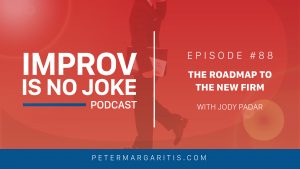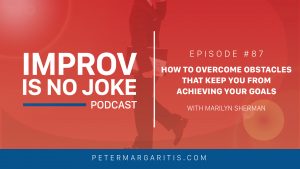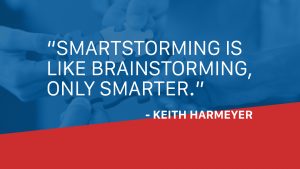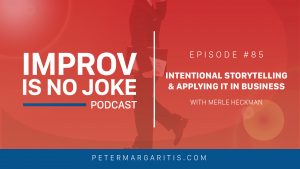
Storytelling, when used for good, will help grow your business, your reputation and your brand. However, when storytelling is used to deceive or to commit fraud, it will ultimately crush your business, your reputation and your brand. That crush may also come with the potential of spending time where orange is the new black, aka, prison.
Think about some of the greatest fraudsters of all time – Madoff, Ponzi, The Wizard of Oz. The one thing they had in common: They all told a compelling story. But when you pulled back the curtain, you found a complex house of cards that could not stand up to scrutiny. There are many instances where corporate storytelling did significant damage to the companies and their brands. Three of my favorite examples are Enron, Theranos, and JCPenney.
In the book, What’s Your Story?: Storytelling to Move Markets, Audiences, People, and Brands, the authors discuss the “Ken Lay Story.” Ken Lay was the son of a poor Baptist preacher in the small town of Tyrone, Missouri. Through hard work and dedication, he became a naval officer, earned his doctorate in economics, was the chief economist at Exxon, was a federal energy regulator and then became undersecretary for the Department of Interior. His successes led him to be the founder and CEO of Enron Corporation.
Ken Lay’s story is a classic story. A poor person living in small town USA, fighting against all the odds to become one of the most powerful and wealthiest men in the energy industry, whose company at its peak had an estimated market value of $70 billion. That was before its collapse. In this story, the early hero is Ken Lay, and the villains are the number of obstacles he had to overcome in his rise to power. However, when Mr. Lay’s moral ethics shifted, his company failed and he went on to become a convicted felon. The hero become the villain.
In a Harvard Business Review case study, A Tale of Storytelling: Its Allure and Its Traps, discusses that it is the departure from the truth that makes the story the winner. This divergence is reflected in the story that Enron was using when their business model changed from pipes-in-the-ground oil drilling to natural gas and commodities. This story was so incredibly compelling that Fortune magazine named Enron “America’s Most Innovative Company” for six years in a row. Innovative maybe, but not the truth.
What’s Your Story? discusses the difference between “truth” and “true.” They use an example of Procter & Gamble and their detergent, Tide. A P&G research scientist sitting in the lab used expensive equipment to prove that Tide cleans laundry better than the competition. That is the true statement. However, laundry rooms throughout the United States do not come staffed with scientists or expensive equipment; those who purchase laundry detergents make a decision about which brand to purchase based on what they believe is the truth. In most cases, the truth is derived from an advertisement that might state “my clothes are cleaner when I used Cheer versus other brands.” In other words, corporate storytelling is about truth statements rather than true statements.
Another What’s Your Story? case study highlights what happened to JCPenney from 2011 to 2013. In 2011 JCPenney hired Ron Johnson, the former senior vice president of retail operations at Apple Inc., to be their next CEO. Ron’s story was one of transformation, bringing the brand back to its original stature as a leading department store. He was going to fix JCPenney’s complex pricing structure, attract both the millennial generation and a more affluent customer base, and create new, exciting shopping experiences. His “truth story” was so compelling that it convinced company stakeholders, many on Wall Street and celebrities like Ellen DeGeneres and Martha Stewart who added their names and product lines to the transformation.
Unfortunately, Ron forgot to take into consideration his existing customer base which was, in fact, almost the exact opposite of the customer demographic that would respond to the new and improved JCPenney. He was telling the stakeholders what they wanted to hear, but forgot to include one true statement about the current customer base: They were middle-of-the-road bargain shoppers. Because of the unrealistic expectations, he was not only unable to attract the young and the rich as customers, he also alienated the true JC Penney’s customer. In 2013, sales dropped 28%, the company’s revenues declined by $1 billion and the stock price was half of what it was before Ron’s vison. No surprise, Ron was fired.
In the Harvard Business Review article titled, Theranos and the Dark Side of Storytelling it discusses Elizabeth Holmes, who is the founder of Theranos. Theranos is a blood testing company that touted technological advances in blood testing. They claimed they possessed the technology to test a wide variety of diseases from a small amount of blood drawn from a pricked finger. Elizabeth’s story is compelling because she was and extremely bright 19 year-old student at Stanford University who dropped out of school to found Theranos. According to the article, her vision was to save millions of lives around the world through her technology.
Her story and her mission were so compelling that in 2015 her company was valued at $9 billion and Forbes magazine named her the youngest self-made female billionaire in the world. Her storytelling was so convincing that she recruited well-known political types, such as Henry Kissinger, George Schultz, Sam Nunn and Col. James Mattis, to be on her Board of Directors.
In October 2015, the Wall Street Journal reported that the company’s blood testing technology was a near-total failure. According to an exposé in Vanity Fair, the Elizabeth Holmes story was told and retold so many times that it became more the story of innovation and female empowerment than the story of Ms. Holmes. The company was founded on the story, and based on current evidence, the story is fictional at best.
The Enron and Theranos situations were deliberately concocted to deceive and defraud an organization and its investors. JC Penny’s situation is different because there was no ill-intent. It was the new CEO’s vision on how to transform the business that blinded people. Actually, the fault lies with the JC Penney Board of Directors who was enamored by the new story. They didn’t analyze the story they loved against the facts they knew to be true in order to determine how this new vision of the company would affect their business and customer base.
It’s time we all recognize the stories behind actions, and how their compelling nature draws us to them. We must ask questions and determine the real character of those actions and whether they stand up as the truth. Even the story Ken Lay finely crafted for Enron had cracks that should have revealed the fraud. In fact, there was one investor who didn’t invest a dime into Enron and was even chastised in financial periodicals and by pundits for his decision. That investor was Warren Buffett. The reason he did not invest into Enron was that he could not make sense of Enron’s business model and how it related to the company financial statements. His logic superseded his emotions in his decision-making process. Reason prevailed, and Buffett came out ahead.
We all love a good story, especially when told by a gifted storyteller. The onus is on us to validate each story through a thorough vetting process.
 Jody Padar, AKA The Radical CPA, is a leader driven by a passion to foster real change in the accounting profession. She represents the next generation of accounting professionals, leading the vanguard for both digital CPAs and future-ready firms.
Jody Padar, AKA The Radical CPA, is a leader driven by a passion to foster real change in the accounting profession. She represents the next generation of accounting professionals, leading the vanguard for both digital CPAs and future-ready firms.
 Marilyn Sherman is a speaker and author who has spent years motivating and inspiring audiences to get out of their comfort zone and get a front-row seat in life, and this is the perfect time of the year to check in with her because she has tips and techniques anyone can use to stay focused on their goals (and New Year’s resolutions).
Marilyn Sherman is a speaker and author who has spent years motivating and inspiring audiences to get out of their comfort zone and get a front-row seat in life, and this is the perfect time of the year to check in with her because she has tips and techniques anyone can use to stay focused on their goals (and New Year’s resolutions). Keith Harmeyer is all about ideas! He is an expert in innovative thinking, creative problem solving, and idea generation who spent over two decades coming up with great ideas for some of the world’s best known and most successful companies (such as JPMorgan Chase, Disney, Conde Nast, and McDonald’s).
Keith Harmeyer is all about ideas! He is an expert in innovative thinking, creative problem solving, and idea generation who spent over two decades coming up with great ideas for some of the world’s best known and most successful companies (such as JPMorgan Chase, Disney, Conde Nast, and McDonald’s). Today’s guest, Merle Heckman, truly understands the power of storytelling – and why it is needed in all aspects of business today.
Today’s guest, Merle Heckman, truly understands the power of storytelling – and why it is needed in all aspects of business today.